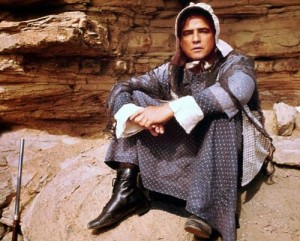
07 Dec Monday Blog – Hot Tongue and Cold Shoulder
I know a retired postman. He’s a good guy, volunteers at the museum I work at and never opens his mouth without something interesting coming out of it. Sometimes it’s not what he says but how he says it, but often times he drops little pearls that are so idiosyncratic he seems to be trying to build his own character. Ask this gentleman how he is, he might hit you with a “fair to partly cloudy”. How’s the wife? “She’s giving me the hot tongue and the cold shoulder at the moment.”
I once read of screenwriter (and so much more) Thomas McGuane “he can create a character with a single line of dialogue”. McGuane could have written my retired postman friend.
I, however, am not that good a writer, so I’ve been struggling with trying to turn a jumble of words into a character without pandering or relying on cliché. It isn’t easy, not by a long shot. My friends on “Writing Excuses” put it this way – dialogue should sketch a character like a shadow. Any one paragraph of dialogue should act like a rough sketch telling the audience what is important to that person, how they interact with the characters and more information so they get a sense of the character. Every line of dialogue and how they say it should work toward that audience understanding.
That’s a tall order for a talented writer. For the rest of us hovering around here at ground level this can be a source of anxiety when you’re writing. In the interest of sounding like I know what I’m talking about, I have a couple of ideas that have worked for me when it comes to using dialogue to sketch character. Your mileage may vary based on genre, character and story.
- How does the character interact with others – The book I’m working on right now (almost 80,000 words and counting) marinates in this. It involves a large group of people who function as a family and a character joking and having fun with one person and giving one word answers to another speaks volumes, or should. The more I figure out the group dynamics the more dialogue really does display character and is one of the most revealing things on the page.
- Don’t get too clever – This is a lesson I think a lot of writers figure out early on but it took me a while – not every clever idea you’ve ever had has to go in your writing. In my book coming out next year I had one character who was a joke teller and threw in far, far too many jokes to be believable, effective or, to be frank, funny. This goes with every character trait you might throw in to the mix. No one is moody all the time or funny all the time or whatever. Of course you need to get the broad strokes across but that doesn’t mean you can’t use dialogue to get some shading done.
- Change the dialogue when things get stressful – When I’m in the midst of conflict or stress, the way I talk give me away every time. I talk faster, I’m more likely to use profanity, I wear my agitation on my sleeve. I’d be an easy character to write for, but not everyone does this. Some speak very quietly, some avoid confrontation or listen more, some become screaming destroyer of worlds in hoping of puffing themselves up. Changing the way someone acts when they are under pressure can be as telling as anything else you do.
- Steal – This is my short hand for watching movies like the Missouri Breaks (written by Thomas McGuane) or reading great writers whose characters you would like to emulate. Then take a crack at it. There’s no shame in trying something and missing.
Of course, drawing from life is fun as well, but in the case of my retired postal worker friends, sometimes their dialogue is too good to be believed.


No Comments